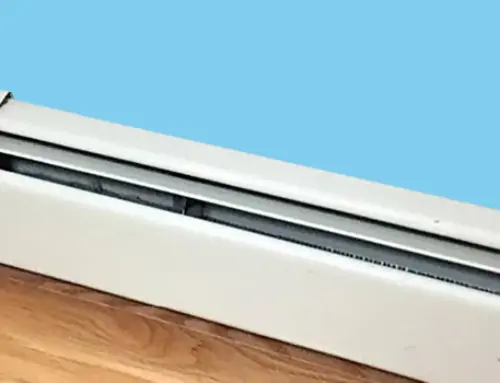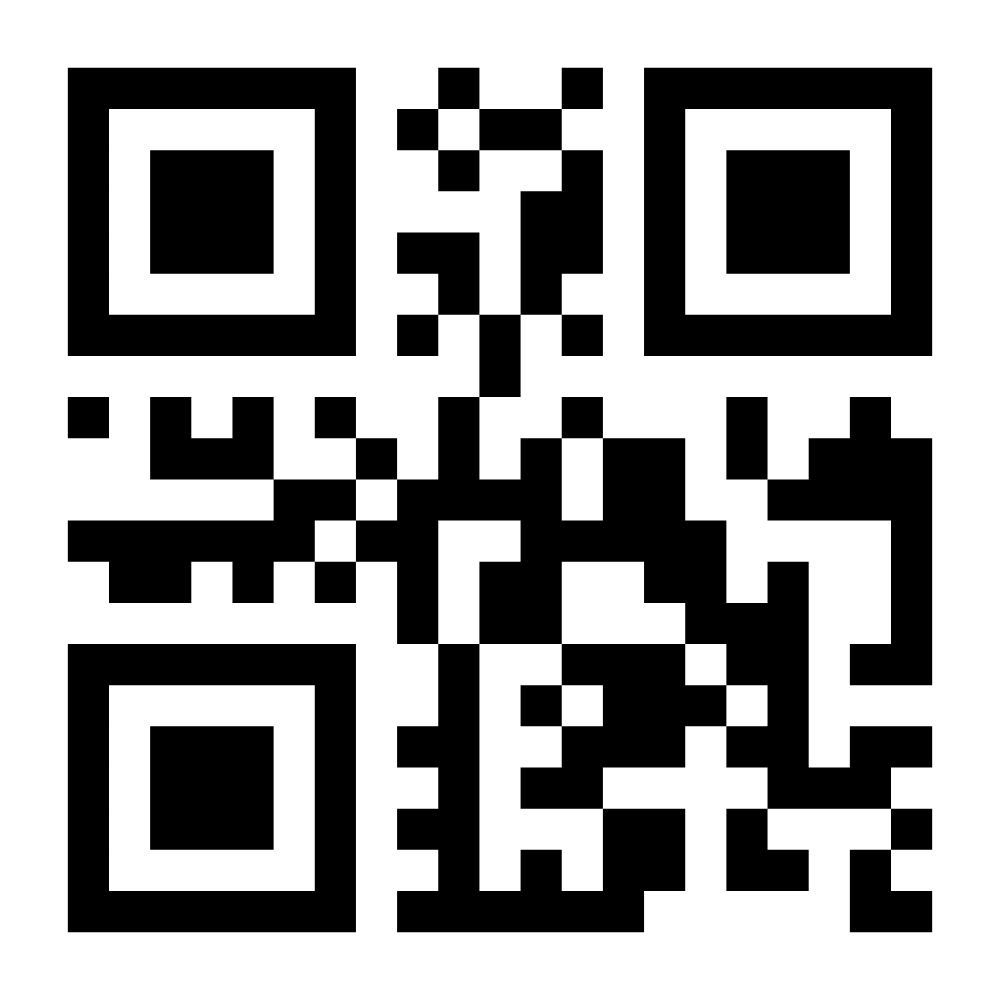What Is Auxiliary Heat & Why is it Showing Up on My Thermostat?
by Tyler Castle
18.6 min read

If you’ve ever glanced at your thermostat during a cold snap and seen the words “AUX HEAT” light up, you’re not alone. For many homeowners in Pennsylvania, Illinois, Ohio, and Michigan, this message appears during winter and brings with it a wave of questions: Is something wrong with my heating system? Is this going to spike my energy bill? Should I be worried?
While it plays a vital role in keeping your home warm, it can also lead to higher energy usage if it’s running more often than it should. But not to worry, we can help!
In this guide, we’ll break down exactly what auxiliary heat is, why it turns on, when it’s normal (and when it’s not), and how to manage it smartly. Whether you’re troubleshooting a thermostat message or just want to get ahead of high winter costs, you’re in the right place. Let’s get started.
Key Points of This Article:
- Auxiliary heat kicks in when your heat pump can’t keep up, especially in cold weather. It’s normal, but frequent use can raise your energy bills significantly.
- Overuse may signal issues like poor insulation or HVAC problems.
- Smart thermostat use and regular maintenance can help reduce AUX heat usage.
What is Auxiliary Heat (AUX Heat)?
Auxiliary heat, often shown as “AUX HEAT” on your thermostat, is a secondary heating source that supports your home’s heat pump system.
It’s designed to turn on automatically when your heat pump can’t keep up with heating demands, especially on very cold days.
A heat pump works by pulling warmth from the outside air and moving it indoors. That’s easy to do when it’s 50°F or even 40°F outside. But once temperatures fall below usually 35°F, your heat pump is notorious for struggling to bring in enough heat on its own.
That’s when auxiliary heat steps in to help maintain this heat. It usually takes the form of electric resistance heating, similar to the coils in a toaster or a space heater where these backup heating elements provide a quick burst of warmth so your system can maintain the temperature you’ve set.
When you see “AUX HEAT” on your thermostat, it’s not a malfunction, but frequent or prolonged use can mean higher energy bills, simply because it uses more electricity than your heat pump. It often runs silently in the background, so many homeowners don’t realize it’s active.
According to the U.S. Department of Energy, electric resistance heating (like what’s used in auxiliary systems) is 100% energy efficient but is still more expensive to operate than standard cycles used by heat pumps or furnaces.
How Does Auxiliary Heat Work?
To understand how auxiliary heat works, it helps to first understand how a heat pump keeps your home warm.
A heat pump doesn’t generate heat; it moves heat from one place to another. In the winter, it extracts heat from the outside air (even in cold temperatures) and transfers it indoors. This process is very efficient until the outside air gets too cold for the heat pump to work effectively on its own.
When your heat pump starts struggling, or when you raise your thermostat several degrees at once, your system automatically activates a backup heating system inside your air handler; this is auxiliary heat.
These coils heat up fast and provide additional warmth to help your system meet the thermostat’s set temperature.
Let’s put this into perspective through a real-life example:
Let’s say your thermostat is set to 70°F, but the outside temperature suddenly drops to 20°F. Your heat pump might only be able to get your home up to 66°F on its own. That’s when your system activates the AUX HEAT, to provide the extra 4 degrees needed.
Or, let’s say you’ve had your thermostat set at 62°F all day while you’re at work, and you come home and crank it up to 72°F. That rapid jump tells your system, “I need heat, fast.” Auxiliary heat kicks in to respond quickly, even if the outdoor temperature isn’t extremely low.
Auxiliary heat is like your system’s “turbo mode”, great when you need it, but not something you want running all the time.
When Does Auxiliary Heat Turn On?
Auxiliary heat turns on automatically when your heat pump needs help keeping your home warm, but that’s not the only time. Here are the most common situations when auxiliary heat is triggered:
1. Extremely Cold Outdoor Temperatures
Heat pumps become less efficient as the air outside gets colder. At around 35°F or lower, your system may not be able to pull in enough heat fast enough. Auxiliary heat kicks in to supplement the heat pump and maintain your set temperature.
2. Sudden Thermostat Changes
If you raise your thermostat several degrees at once, the system may use auxiliary heat to meet that demand faster, especially if it senses it can’t reach the new temperature quickly enough using just the heat pump.
3. Defrost Mode Activation
During winter, frost can build up on the outdoor coils of your heat pump. To prevent ice damage, the system enters defrost mode, temporarily reversing operation to melt the ice. While this is happening, the heat pump can’t warm your home, so auxiliary heat takes over until the cycle ends.
4. Heat Pump Issues or Weak Performance
Sometimes, auxiliary heat turns on even when it’s not that cold outside, a sign your heat pump may not be working efficiently.
This could be due to low refrigerant, dirty filters or coils, airflow issues like blocked vents or leaky ducts, or a system that’s too small for your home. When this happens, your system relies more on energy-hungry auxiliary heat to make up the difference, leading to higher bills and uneven heating.
What Does Auxiliary Heat Mean on My Thermostat and Why Does My Thermostat Say Auxiliary Heat is On?
When your thermostat displays “AUX HEAT”, it means your heating system has automatically switched on a backup heat source to help your heat pump reach the temperature you set.
This typically happens when outdoor temperatures are very low, you make a big jump in your thermostat setting, or your heat pump isn’t performing efficiently due to issues like dirty filters, low refrigerant, or poor insulation.
“AUX HEAT” is your thermostat’s way of telling you that it’s using more energy to keep your home warm. It’s normal during cold snaps, but if you see it often, especially when it’s not freezing outside, it might be time to check your system or thermostat settings to avoid higher energy bills.
How Does Auxiliary Heat Affect HVAC Performance?
Auxiliary heat plays an important role in helping your home stay warm during extreme cold, but if it runs too often, it can also strain your HVAC system and hurt its overall performance. Here’s how:
1. Increases Wear and Tear
When your system regularly switches to auxiliary heat, it uses electric resistance heating, which is essentially like running a high-powered space heater inside your HVAC unit. This puts extra demand on your system’s components, especially the air handler, blower motor, and electric heating coils. Over time, that can lead to:
- Faster breakdowns
- Shorter system lifespan
- More frequent service calls
2. Reduces Efficiency
Heat pumps are designed to be highly energy-efficient. According to the Department of Energy, heat pumps often deliver 2 to 3 times more heat per unit of electricity compared to traditional electric resistance heaters. But when auxiliary heat kicks in, your system loses that efficiency edge.
Electric resistance heating is 100% efficient at the source because it turns electricity directly into heat, but when you add auxiliary heat, this consumes much more electricity than your heat pump to produce the same amount of warmth.
So, while your home may stay comfortable, your system is now working harder and less efficiently, which leads to higher energy usage.
3. It Masks System Issues
Auxiliary heat should only be a “sometimes” use case. Using it too often can shield underlying problems with your overall heating unit. That’s why it’s important to track how often AUX HEAT appears and mention it during your HVAC tune-ups.
Does Auxiliary Heat Cost More?
Auxiliary heat usually costs more to run than your heat pump’s regular heating mode. That’s because it relies on a different type of heating that’s less energy-efficient.
Most auxiliary heat systems use electric resistance heating, basically, a set of heated coils that warm the air directly. It’s effective, but it uses a lot more electricity than your heat pump’s main function. If your system relies heavily on this backup heat, you may see a noticeable increase in your energy bill, sometimes up to 50% more.
If you have a dual-fuel system (a heat pump with a gas furnace backup), your costs may vary depending on the price of natural gas versus electricity in your area. But even then, backup heat is still usually more expensive to run than your regular heat pump cycle.
That’s why it’s important to use auxiliary heat only when needed. Avoid big jumps in thermostat settings, keep up with regular HVAC maintenance, and consider using a smart thermostat that can manage heat more efficiently and reduce how often AUX heat kicks in.
How Often Should the Aux Heat Come On?
In cold climates like Pennsylvania, Illinois, Ohio, or Michigan, it’s normal for auxiliary heat to turn on occasionally during the winter or your thermostat calls for a quick temperature increase. But how often is too often?
When It’s Normal:
- Short bursts during freezing weather (below 35°F)
- When your system goes into defrost mode
- If you raise your thermostat more than 2–3 degrees at once
- Overnight, when outdoor temps are at their lowest
In these cases, auxiliary heat may run for a few minutes at a time to help your heat pump catch up. That’s expected—and a sign your system is working as designed.
When It’s Too Frequent:
- AUX heat is on all day, even when it’s not that cold
- You see “AUX HEAT” every time you turn on your system
- Your indoor temperature stays below the set point
- You notice a significant spike in your electricity bill
Frequent or prolonged use of auxiliary heat could point to a weak or undersized heat pump, poor insulation or air leaks, or dirty filters, blocked vents, or low refrigerant levels.
AUX Heat vs. Emergency Heat: What’s the Difference?
If you have a heat pump, your thermostat might show two heating modes you don’t fully recognize: AUX HEAT and EMERGENCY HEAT (sometimes labeled EM HEAT). While both are backup heating options, they are not the same—and they serve different purposes. Let’s break it down:
AUXILIARY HEAT (AUX HEAT)
Aux heat is a built-in backup that automatically turns on when your heat pump can’t keep up.
Aux heat commonly runs during periods of very cold weather, during defrost cycles, or when you make a large jump in your thermostat setting. In this setting, aux heat keeps the system running and adds extra heat for faster warmth.
In most cases, your thermostat decides when to activate it and you don’t need to do anything to turn it on.
EMERGENCY HEAT (EM HEAT)
Emergency heat is a manual override you turn on only when the heat pump fails or stops working completely.
The best time to use this setting is if your outdoor unit is damaged, frozen, or not functioning at all. When your heating system is malfunctioning, it completely shuts off the heat pump and uses only electric heating strips or a secondary heat source (sometimes gas or oil) to warm your home.
If you need to, you can manually switch this setting on through the thermostat settings.
Emergency heat should only be used for true emergencies. Since it bypasses the energy-efficient heat pump, it is the least efficient and most expensive heating mode. You should only use it when absolutely necessary and contact an HVAC technician to fix the problem right away.
Difference Between AUX Heat and Emergency Heat
| Feature | Auxiliary Heat | Emergency Heat |
| Activation | Automatic | Manual |
| When It’s Used | Heat pump needs help | Heat pump is broken |
| Heat Pump Runs? | Yes (with backup heat) | No (backup only) |
| Cost to Run | High | Even higher |
| Triggered By | Thermostat or control board | You (manual switch) |
In a nutshell, the difference between auxiliary heat and emergency heat comes down to its function.
Aux heat is used as backup heat for when your heat pump can't keep up, and emergency heat is used when your heat up fails and is not operational.
Is It Bad If Auxiliary Heat Comes On?
It's not a bad thing when auxiliary heat comes on, and in most cases, it's completely normal.
Auxiliary heat is a built-in part of your heat pump system, and it's there for a reason: to keep you warm when outdoor temperatures drop or when your system needs a little extra help reaching your thermostat's setting.
In fact, if you live in colder areas of the U.S, it's expected that your auxiliary heat will turn on a few times during winter, especially on freezing mornings or nights when the temperature dips below 35°F.
When You Don't Want Auxiliary Heat On
While auxiliary heat is helpful during extreme cold, there are times when you don't want it running because it uses significantly more electricity and can drive up your energy bills fast.
You don't want auxiliary heat on when:
- The weather is mild and the heat pump should be able to handle the load on its own.
- You're trying to save energy, especially if you're on a budget or managing high winter bills.
- You're home for a short time and don't need your space to heat up fast.
In these situations, using auxiliary heat adds unnecessary strain and cost. To avoid it, make smaller temperature changes (just 1–2°F at a time), use a programmable thermostat, and make sure your system is well maintained so it doesn't depend on AUX heat when it doesn't need to.
What to Do If AUX Heat Turns on Too Often
If your auxiliary heat seems to be running all the time, it could be a sign that something isn't right.
AUX heat is energy-hungry, and overuse can cause high electric bills. It's only meant to kick in occasionally when your heat pump needs help.
To troubleshoot this issue, try:
- Checking your outdoor temperature. If it's above 35–40°F and AUX heat is still running, your system may not be operating efficiently, or something must be wrong with your heat hump where it's not bringing in the energy it needs.
- Avoid large thermostat jumps. Raise the temperature gradually to avoid triggering AUX mode. Usually, a temperature jump of 5 to 1- degrees or more can trigger aux heating.
- Use a smart thermostat. It can help manage temperature changes more efficiently and reduce reliance on backup heat. Smart thermostats are superstars as monitoring temperature changes and their programming ability comes in clutch. You can literally program your thermostat to raise your temperature by only a few degrees which can potentially knock out aux heat altogether.
- Replace your air filter regularly. A clogged filter restricts airflow and makes your system work harder than necessary. This can also wrongly trigger your auxiliary heat even if your heat pump is working fine.
- Inspect your vents and airflow. Ensure supply and return vents are open and unobstructed throughout your home. This lack of air flow might cause your auxiliary heat to kick on.
- Schedule seasonal HVAC maintenance. A professional can check for dirty coils, low refrigerant, or airflow problems that reduce heat pump performance. All can prevent your auxiliary heat from turning on when it doesn't have to.
- Call a technician if needed. If your AUX heat is active even after all these tips, that's okay! Your system may be undersized, misconfigured, or in need of repair. It's best to call a technician to help with more complicated issues.
What to Do if Your AUX Heat Won't Turn Off
If AUX HEAT stays on, this is a good sign something may be stuck or misconfigured. To figure out this issue, try:
- Lower your thermostat setting slightly: Drop your temperature by 1–2°F and see if the AUX HEAT turns off.
- Double-check your mode setting: Make sure your thermostat is set to HEAT, not EM HEAT (Emergency Heat), which disables the heat pump, and which often forces AUX to run nonstop.
- Power cycle your system: Turn off your thermostat, wait a few minutes, then turn it back on to reset any potential glitches.
- Check the outdoor temperature: If it's still below 35°F, AUX heat may be running appropriately due to the cold.
- Replace your air filter: Restricted airflow can force your system to rely on auxiliary heat for longer than necessary.
- Inspect your circuit breakers: A tripped breaker for your outdoor unit or air handler could disable the heat pump, leaving only AUX heat or emergency heat running.
- Call a professional: If your auxiliary heat still won't turn off, there may be an issue with the control board, wiring, or a stuck relay that needs professional repair.
What to Do If My AUX Heat Doesn't Turn On (But Should)?
If your home isn't warming up during a cold snap, and your thermostat shows AUX HEAT should be active—but nothing seems to be happening—your backup heat may not be working. Here's what to check:
- Confirm your thermostat is in HEAT or AUTO mode: It shouldn't be in COOL or FAN mode, which would block the heating cycle.
- Check the airflow: If the system is blowing air but it isn't warm, the electric heat strips (or other backup source) may not be turning on.
- Ensure Emergency Heat (EM HEAT) isn't turned on manually: This overrides normal operation and could prevent AUX from working properly in some systems.
- Inspect your breaker panel: Auxiliary heating elements often have their own breaker. Make sure it hasn't tripped.
- Replace the air filter: Poor airflow caused by a clogged filter can prevent the heat system from running as it should.
- Review thermostat settings (especially on smart models): Some thermostats have energy-saving features or misconfigured settings that limit when AUX heat can activate.
If it still doesn't work, contact an HVAC technician. The issue could be deeper than you might think. Common bigger issues include a failed electric heating element, a faulty control board, or even a broken temperature sensor.
How to Tell if Your AUX Heat Is Running
Aux heat often kicks in silently, but these signs can help you spot when it's active—and potentially costing you more:
- Thermostat Shows "AUX HEAT" – Most thermostats clearly display "AUX HEAT" when the backup system is running.
- Heats Up Quickly Indoors – If your home warms up unusually fast after adjusting the thermostat, AUX heat may be on.
- Outdoor Unit Isn't Running – If your indoor system is heating but the outdoor fan is off, AUX heat is likely doing the work.
- Higher Energy Bill – A sudden spike in usage during cold weather could be a sign that AUX heat is running too often.
How to Prevent AUX Heat from Driving Up Your Energy Bills
Auxiliary heat is useful, but it's also one of the most expensive parts of your HVAC system to run. The more it kicks on, the more electricity your home uses, and the higher your bill climbs. Fortunately, there are simple steps you can take to reduce how often your system relies on AUX heat:
- Avoid big temperature swings: Raise your thermostat gradually—1–2°F at a time so your system doesn't call for backup heat.
- Install a smart thermostat: It can learn your habits and adjust your heating schedule to avoid unnecessary AUX usage. Might even be able to program your thermostat to bypass auxiliary heating altogether.
- Seal leaks and insulate: Drafty windows, poorly sealed doors, or low attic insulation make your system work harder leading to potentially more windows for auxiliary heat to kick on.
- Change your air filter regularly: A clogged filter restricts airflow and causes your system to rely more on backup heat.
- Schedule seasonal maintenance: Keep your heat pump running efficiently with professional tune-ups before winter sets in.
When the temperature dips below freezing and your AUX heat kicks in, your energy usage and your utility bill can spike fast.
That's why more Midwest homeowners should consider switching to an Unlimited Energy Plan from Santanna Energy Services. Our Unlimited Energy plan offers no surprises and a steady monthly supply charge. No guessing. Just warm homes and predictability no matter how many nights AUX HEAT runs.* See our Unlimited Energy plan now.
FAQs
My thermostat says AUX HEAT—should I panic?
No way! It's often a normal response to cold weather. But if it runs constantly, call an HVAC pro.
Why is my AUX heat on but there's no warm air?
Your heat strips might be malfunctioning. Try switching to Emergency Heat or call for a repair if this issue persists.
Can I disable AUX heat completely?
Most systems won't let you fully disable it, but smart thermostats can reduce its usage through smarter temperature control.
Auxiliary heat is an important part of keeping your home warm in winter—but when it runs too often, it can drive up your energy bills fast. By understanding how it works, knowing when it's needed, and using smart thermostat habits, you can keep your home comfortable without overpaying for heat.
Want to reduce the impact of AUX heat on your bills this winter? Consider locking in an Unlimited Energy Plan from Santanna. You'll get predictable supply charges and peace of mind—even on the coldest nights when your system works its hardest. *
* Restrictions apply. Enrollment based upon program eligibility. Customers using more than 125% of normal monthly usage as determined by Santanna may be required to switch plans.
Tyler is an experienced energy professional, having worked for Santanna Energy Services, for the past four years. He is passionate about renewable energy and believes that diversifying the energy grid is the key to a sustainable future. Tyler is dedicated to supplying consumers with the best possible energy solutions and works diligently to make sure that Santanna can deliver the highest quality service.







